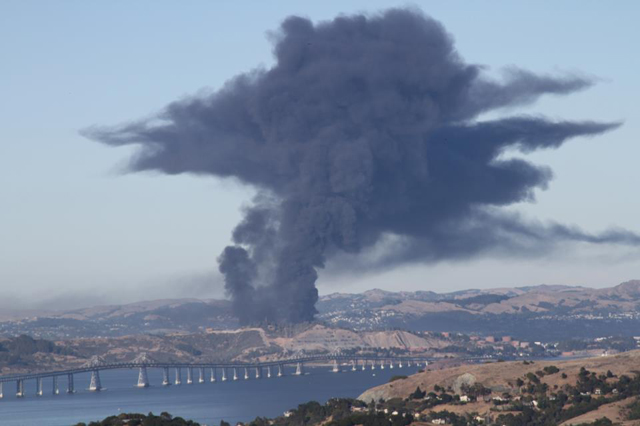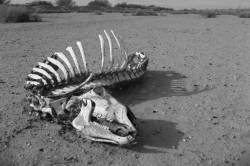Almost 87 percent of the Western U.S. is in a drought, the Los Angeles Times reports today in a big, gloomy article with big, gloomy pictures. New Mexico is 100 percent droughty. Here are just a few of the ways that sucks.
1. The Rio Grande is so dry that it’s been dubbed the Rio Sand. Satellite photos show reservoirs drying up too.
2. People in parts of New Mexico are having to take drastic measures to get water. “Residents of some towns subsist on trucked-in water,” the L.A. Times reports, “and others are drilling deep wells costing $100,000 or more to sink and still more to operate.”
3. Water wars are flaring up and states are getting litigious. Also from the Times: “Texas has filed suit, arguing that groundwater pumping in New Mexico is reducing Texas’ share of the Rio Grande. Oklahoma has successfully fended off a legal challenge from Texas over water from the Red River.”
4. Wild critters are in trouble. Wildlife managers in New Mexico are bringing water to elk herds so they don’t die of thirst. Some conservationists think those managers should also bring food to bears so the bears don’t lumber into human settlements while desperately seeking sustenance.
5. Trees are taking a beating. Thousands of trees in Albuquerque have died of thirst.
6. Swimming holes are becoming dirt holes. A trio of Texas state agencies is inviting the public to share photos of the drought, and one recurring subject is swimming signs in front of waterless landscapes, like this one.
7. Some desperate farmers in New Mexico have resorted to selling their water to fracking companies so they can afford to pay their bills. As Joe Romm writes at Climate Progress, “The worse news is that many of them are actually pumping the water out of the aquifer to do so. The worst news of all is that once the frackers get through tainting it with their witches’ brew of chemicals, that water often becomes unrecoverable — and then we have the possibility the used fracking water will end up contaminating even more of the groundwater.”
Is climate change to blame for all the droughtiness? The L.A. Times:
The question many here are grappling with is whether the changes are a permanent result of climate change or part of cyclical weather cycle. …
Nonetheless, most long-term plans put together by cattle ranchers, farmers and land managers include the probability that the drought is here to stay.
John Clayshulte, a third-generation rancher and farmer near Las Cruces, removed all his cattle from his federal grazing allotment. “There’s just not any sense putting cows on there. There’s not enough for them to eat,” he said.
“It’s all changed. This used to be shortgrass prairies. We’ve ruined it and it’s never going to come back.”




